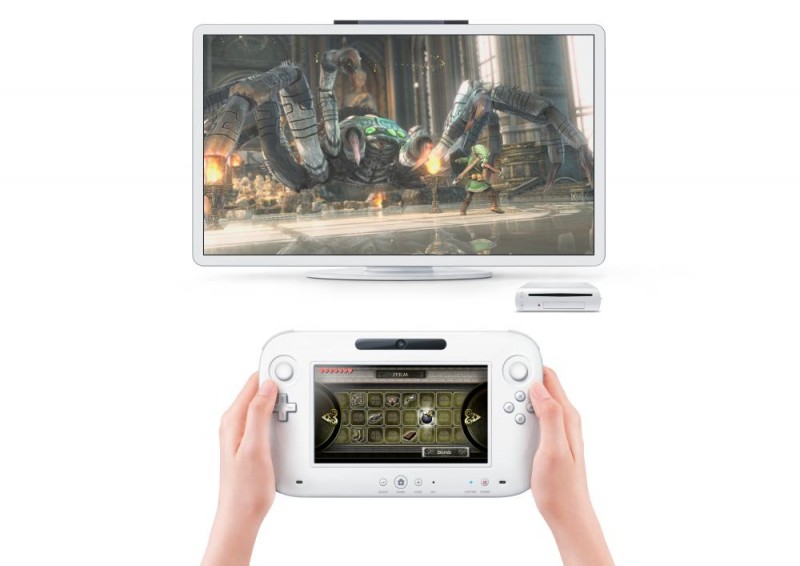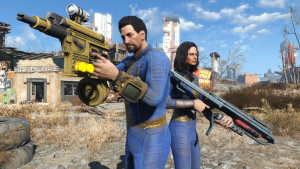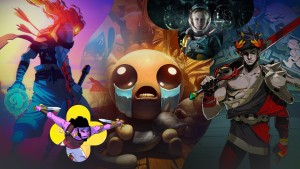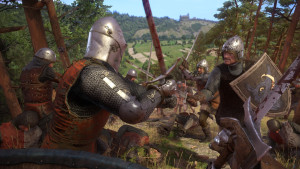Please support Game Informer. Print magazine subscriptions are less than $2 per issue
I've Played Nintendo's New HD Console

We’ve known it was coming for some time now, but today Nintendo finally revealed its new HD console, the Wii U. The announcement is fresh, but I’ve already had some hands-on time with the intriguing new technology behind the system.
Before getting my hands-on time, Nintendo’s David Young explained that the company is not yet showing any full games in production – only what they’re calling “experiences.” A couple of these experiences were fleshed out games, but most of them were simple tech demos created to demonstrate the system's capabilities.
With that warning out of the way, Nintendo unveiled the Wii U controller. As has become the most frequently repeated rumor over the last couple of months, the controller for the new system is a traditional game controller – two analog sticks, a d-pad, four face buttons, two shoulder buttons, and two triggers – but with a large touch screen in the middle. The touch screen is 6.2 inches, making the rectangular controller’s full size just a teensy bit smaller than an iPad. The back has a nice curve to it that allows you to cradle it in your hands in a way that’s comfortable despite the controller’s size.
The first demo that Nintendo showed off followed a bird in flight through a serene Japanese pond environment. This graphically intensive demo was openly created to show off the system’s HD capabilities, since this is the first Nintendo system that will be capable of rendering graphics in 1080p. Many elements of the demo appeared in stunning detail, such as rain falling in big drops that splashed into the pond and caused ripple,s or flower petals bursting into the air and bouncing off of and around the bird’s wings in a realistic fashion.
The demo was not hyper-realistic, nor was it the greatest thing I’ve seen in the current generation of consoles, but it was definitely beautiful, crisp, and far above the visual quality possible on the original Wii. Also of note, the same visuals that appeared on the TV were being emulated on the controller’s screen. Nintendo informed me that the controller’s screen is not HD itself, but it’s so much smaller than an HD TV that it’s difficult to tell.
The next demo – more of an actual game – was titled Chase Mii. This multiplayer, Mario-themed mini-game somewhat resembled Pac-Man Vs. for the Gamecube. Essentially, four players take on the role of Miis dressed as toads. These four use Wii remotes – the new system is completely backward compatible with Wii software and hardware – and play split-screen on the television. A fifth player steps into the role of a Mii in a Mario hat. This player actually uses the controller’s screen as his point of view on the action. Two boxes will appear on the screen – one showing the Mario player’s current location and another with a map that reveals where all of the toads are. Mario gets a head start to hide, after which the Toads must navigate the maze and find him.
While this party game was rather simplistic, it was also a lot of fun. Although the toads are slower than Mario and don’t have the advantage of a map, they can communicate with each other to corner him or cut him off. They also have a tackle move that allows them to jump for the popular plumber if they get in close enough. The player taking on the role of Mario actually had more trouble surviving in our handful of playthroughs.
The next demo, another multiplayer affair, was titled Battle Mii. Though once again using Miis, this time the player-created characters found themselves in a Metroid-esque world. Two players using Wii remotes are dressed in Samus-like armor, while a third on the new touch screen controller takes over Samus’ iconic gunship.
Two things stood out to me about the Battle Mii demo: First, the third-person shooter controls for the Samus Miis felt far tighter and nicer than I’m used to from Wii shooters. Maybe I haven’t played enough recently or maybe it was because I was using Wii controllers with Motion Plus built in, but I felt very in control and like I could easily and quickly aim where I wanted.
Inversely, I felt very out of control with the gunship thanks to its unconventional control method: the new controller’s gyroscope. While the analog sticks can control turning in addition to forward momentum and altitude, the ship turns very slowly when using the sticks. Instead, players on the new controller can physically move around to change where the ship is facing. This requires holding the controller up at a straight angle to start, which is a little strange in the first place. I found it very difficult to get used to the idea of aiming by moving the controller – almost like it was a scope – rather than just moving the analog sticks. Perhaps with more practice it becomes second nature, but in the short time that I played Chase Mii, I got absolutely wrecked by my morph ball-loving opponents.
The only single-player demo that I received with actual gameplay was a title called Shield Pose. This mini-game resembled something that you’d see in a Rhythm Heaven title. The concept is that you’re on a ship surrounded by pirate ships. The captain of the pirates is ordering his lackeys to shoot suction cup arrows at you. The captain gives a telltale shout of “left,” “right,” “center,” or “overhead” to let you know where the arrows will come from, at which point you must lift the controller in the right direction in time with the music. As with Rhythm Heaven challenges, it gets fast and complicated quickly, but it was a fun, light little experience.
I was also shown an impressive tech demo of a camera moving down a street in Japan. On the television screen, the camera continues down the street in a straight line. On the controller screen, the player can move in 360 degrees to view the street from any angle – even down on the road or up into the sky! It was very cool from a technological perspective, although it’s difficult to tell what gameplay will come from this. Nintendo said we should imagine it being applied to our favorite genres, but I’m not sure how that would work…except in racing games, I suppose.
I was shown one final teaser for what a Zelda game on the Wii U would look like. For information on that, check out my full write-up.
After this brief first hands-on experience with the new Nintendo system, I’m equally excited and anxious for the prospects of this unique controller. As they did previously with the Wii’s motion controls and the DS’s dual touch-screen innovation, Nintendo is introducing something wildly unique to the industry. If developers are able to wrap their head around this technology, it could lead to some incredibly interesting gameplay mechanics that simply won’t be possible on current competing consoles. With the DS, that put Nintendo ahead of the competition. With the Wii, it got them behind in third-party support because developers struggled to put the motion controls to good use. With the new system, it could go either way.
There are tons of questions left. With the amazing technology in the controller, how much will the system cost and (perhaps more importantly) how much will extra controllers cost? What about online? Will Nintendo finally become a major online player or will they remain stuck in the past? Where are the full games from Nintendo? Hopefully most of these issues will be cleared up one way or another on the march to the system’s current broad launch window of April 1, 2012 to December 31, 2012.










